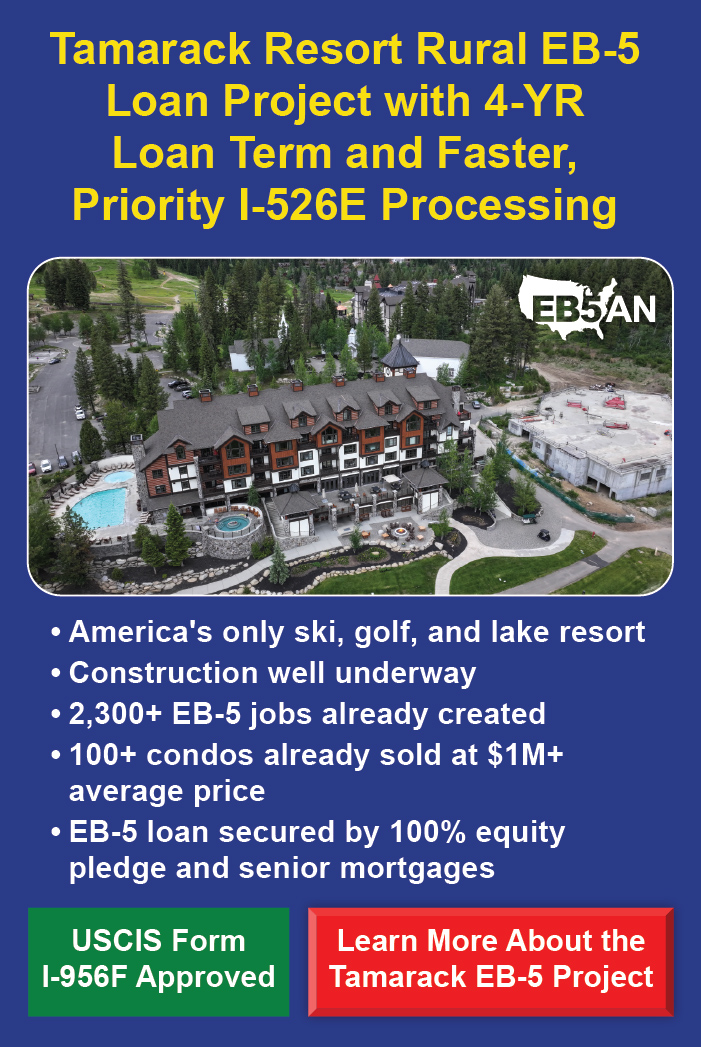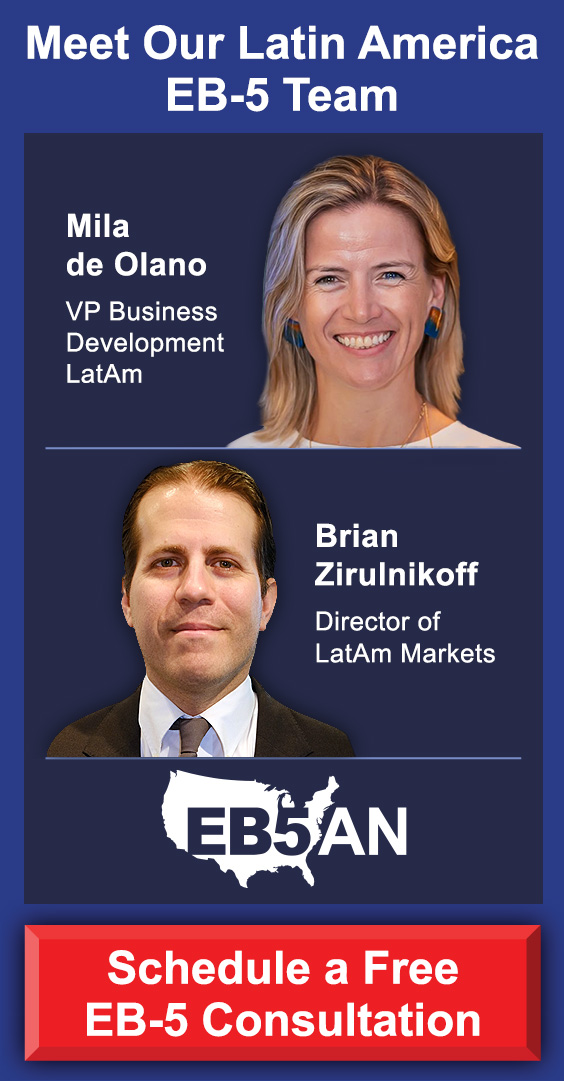Does your business want to attract funding for a development project from the EB-5 Immigrant Investor Program?
If so, you’ll need to get that project approved for funding by United States Citizenship and Immigration Services (USCIS). A critical step in the approval process is to write and submit a detailed and compliant EB-5 business plan.
A good business plan is also important for attracting investors. Foreign immigrant investors will use your business plan to apply for a visa under the EB-5 program. This article will help you understand what an EB5 business plan is and how you can write one.
What Is an EB-5 Business Plan?
What Is a Matter of Ho Business Plan?
Types of Business Plans
Steps to Creating an EB-5 Business Plan
What Is an EB-5 Business Plan?
Not all enterprises qualify for EB5 investment capital. Business owners need to ensure compliance with USCIS regulations before being eligible to receive EB-5 investment funds. A key step in this approval process is to write a detailed EB-5 business plan.
A strong EB-5 business plan, along with other legal and supporting documents, proves to USCIS and investors that the project is feasible and complies with EB-5 investment regulations.
A business plan must be completed and submitted to USCIS, along with other legal agreements, supporting documents, and USCIS filings, before the marketing process can begin. A business plan must be submitted by investors along with Form I-526E when they apply for the EB-5 visa program.
What Is a Matter of Ho Business Plan?
EB-5 business owners should study the 1998 Matter of Ho court ruling when crafting their business plans, as adhering to it is a key requirement for an EB-5 business plan. This ruling established a precedent, mandating that EB-5 business plans must be comprehensive, credible, and in compliance with EB-5 program requirements.
The Matter of Ho ruling outlines a number of minimum requirements for a business plan, however, the below four major elements are the most critical for a USCIS-compliant EB5 business plan:
- A job creation strategy
- Operating permits
- A marketing plan
- Financial projections
Let’s look at each requirement in detail.
Job creation
USCIS regulations require EB-5 business projects to create at least 10 full-time jobs per EB-5 investor. Therefore, a project’s strategy for generating employment is an essential element of its business plan. The following information regarding job creation should be included in the business plan:
- The estimated number of qualifying jobs that are expected to be created
- Thorough descriptions of the job positions or employment opportunities to be created
- A hiring schedule or construction timeline for indirect investments
Operating permits
An EB-5 business plan must prove the project can operate legally. This entails obtaining all the necessary permits and licenses.
Marketing Plan
The marketing plan should clearly indicate how the project is expected to generate operational and/or sales revenue through marketing efforts.
Financial Projections
Demonstrating economic feasibility is an important objective of EB-5 business plans. Potential investors need reasonable assurance that the business is financially viable and likely to reach completion successfully. A compelling EB-5 business proposal must include forecasts and projections detailing the projected profits and losses of the business for its first five years.
This information should be supported by reliable data, and if job creation will be assigned to operational jobs, by an independent third-party source.
Types of Business Plans
There are three types of EB-5 business plans:
- Hypothetical business plans
- Actual business plans
- Exemplar business plans
It’s important to understand what each type entails and the benefits associated with them.
Hypothetical business plans
This is a special type of business plan that is submitted along with Form I-924 by businesses that want to gain regional center designation. Gaining this designation allows a business to receive EB-5 capital from immigrant investors.
As the name suggests, the projects outlined in a hypothetical business plan don’t need to be active. They are used to show the types of projects that the entity will undertake or invest in as a regional center.
It does, however, need to include specific business proposals and supporting documentation showing how the regional center will have a positive impact on the region’s:
- Economy
- Productivity
- Employment
It should also show how the regional center will encourage investment in the area. Although it’s recommended that hypothetical business plans follow Matter of Ho guidelines, it isn’t a requirement.
Actual business plans
Actual business plans are for businesses with “shovel-ready” projects actively seeking EB-5 investment.
Actual business plans must meet Matter of Ho requirements, which are:
- A description of the business
- A description of the business’s products and/or services
- The business objectives
- A market analysis, including:
- the names of competing businesses and their relative strengths and weaknesses,
- a comparison of the competition’s products and pricing structures
- description of the target market/prospective customers of the new commercial enterprise
- A list of required licenses and permits obtained
- If applicable, a description of the manufacturing or production processes, the materials required, and the supply sources
- If applicable, a description of any contracts executed for the supply of materials and/or the distribution of products
- Marketing strategy of the business, including pricing, advertising and servicing
- A description of the organizational structure of the business and its personnel’s experience
- A description of any business staffing requirements, timetable for hiring, and job descriptions for all positions
- Sales, cost, and income projections and details of their bases
- Overall, the business plan must be credible
Steps to Creating an EB-5 Business Plan
Your business plan should be credible and comprehensive.
We recommend using the following structure:
Summarize your project in a description
Begin by describing your project. Include details of the project’s
- Purpose
- Industry
- Mission
- Operations
- Personnel
- History (or that of the senior management)
- Future plans
Business structure
Explain your project’s business structure. For example, will it be a limited partnership or a corporation? Your project must be a for-profit new commercial enterprise.
Prove you have the correct licenses
List the different licenses you’ll need to legally run the project and prove that you’ve obtained them.
Outline your marketing plan and budget
Explain to USCIS how you intend to market your project to customers. You should also outline your project’s budget. This will allow USCIS to evaluate the project’s financial viability.
Provide details of key personnel and their experience
Provide a profile of each member of the project’s senior management team. Include details of:
- Their skills and experience
- How they will fit into the business’s organizational structure
- Their management approach
- What role they will play on a day-to-day basis
The aim is to show USCIS that your management team is credible and qualified and will ensure the project’s success.
Analyze the competition
The success of your project won’t just depend on what happens inside your business. You’ll also need to analyze the competition to see how challenging the market is.
In addition to any other relevant factors, include details on your competitors’:
- Market penetration
- Products and services
- Prices
- Strengths and weaknesses compared to your project
List the jobs you will create
Creating 10 full-time jobs is one of your project’s most important aims. An increased likelihood of creating sufficient jobs to support all EB-5 investors in the project will gain USCIS approval and attract investors. Provide detailed descriptions of the jobs you will create and show how they relate to, and benefit, your business operations.
Timetable your planned hires
EB-5 investors need to generate 10 jobs within two years. It’s, therefore, important to accurately schedule when each job will be created.
Project your finances
Finally, provide credible financial projections showing that you will achieve strong performance over five years. Include details of the project’s
- Sales
- Income
- Costs
- Employee salaries
- Other relevant financial factors
You’ll also have to explain the source of your funds and describe how you will use investors’ funds. For example, will you kickstart the project with a senior loan and then gradually introduce investor funds? If so, who will be repaid first?
💡Hire a third party for financial projections |
| Credibility is key when producing financial projections, so you should follow accepted accounting standards. We recommend asking an unaffiliated third party to draft these financial projections for you. |











